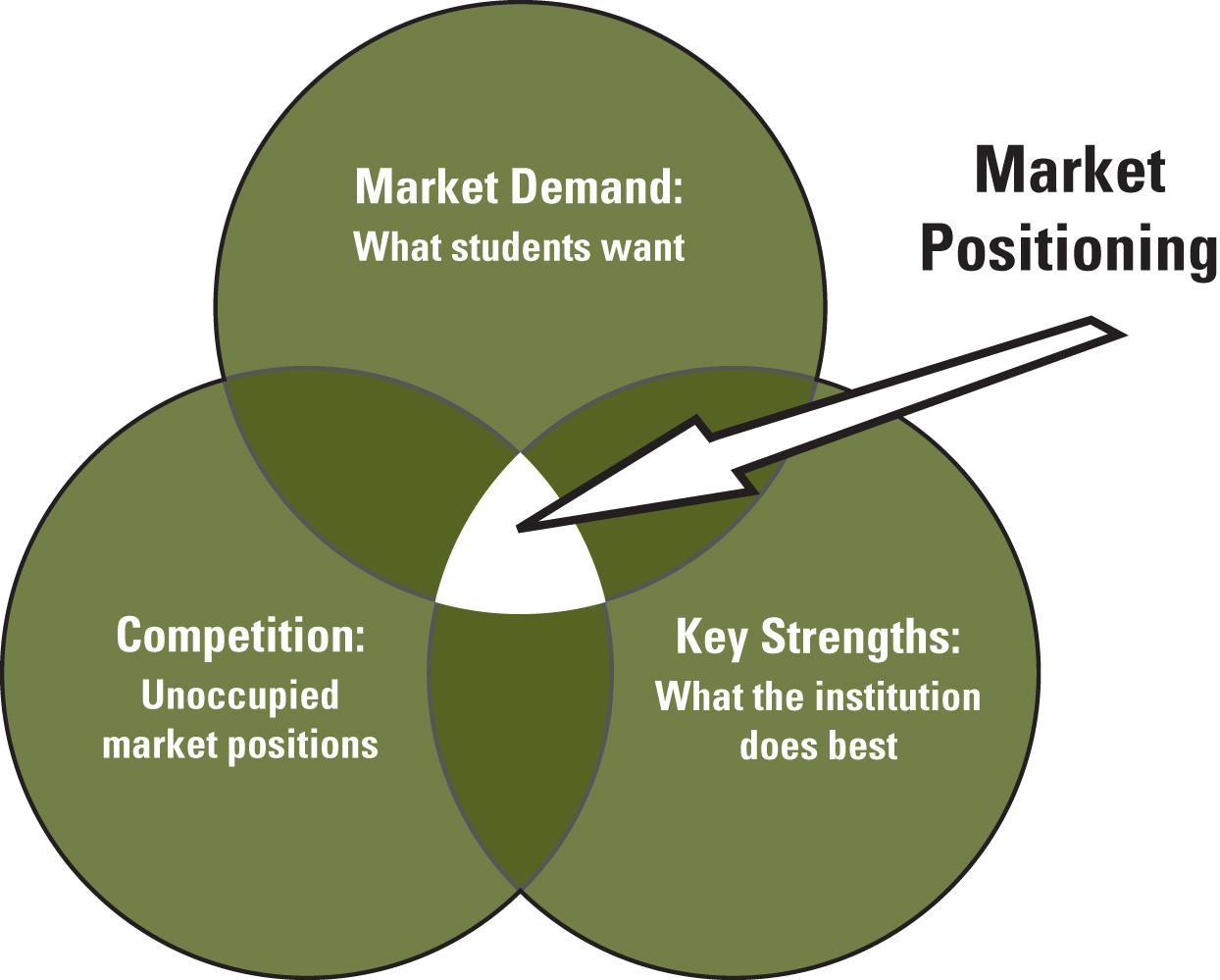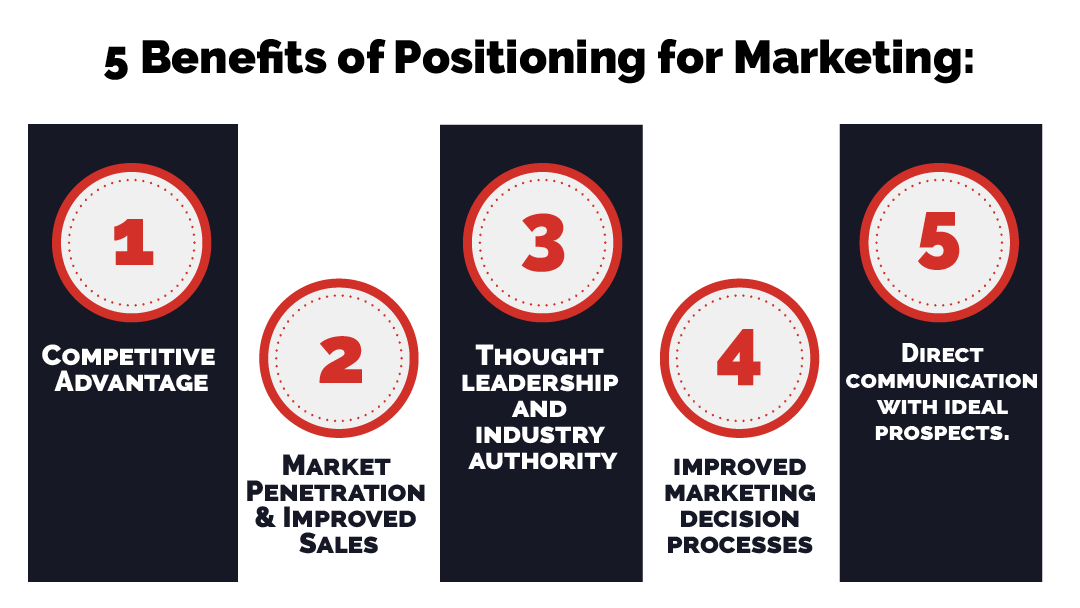What is Market Positioning
Market positioning is the strategic process of establishing a brand or product in a specific niche within the market to create a distinct image and identity. It differentiates offerings from competitors by highlighting unique features, benefits, or value. Thus, it aims to influence consumer perception and preference, securing a competitive advantage.

Core Concepts of Market Positioning
A market positioning map defines how a product or brand is perceived in consumers' minds relative to competitors. Core concepts include identifying target audiences, differentiating through unique value propositions, emphasizing competitive advantages, and crafting a consistent brand message. Effective positioning helps establish a strong, favorable, and distinctive market presence, influencing consumer preferences and driving market success.
Why is Market Positioning Important?
Here are the reasons that show Market positioning’s importance.
Establishing Brand Identity and Perception
Let's get back to lemonade. Without saying a word, your stand, with its fresh lemons and mint sprigs, sends a message. Your brand is fresh, natural, and invigorating. You're not just selling a drink; you're offering a summer day in a glass.
Suggested Rading: Selling in Marketing
Standing Out in a Crowded Market
But there are dozens of lemonade stands out there. To get noticed, you need to pour more than just lemonade—you need to serve up an experience. That's what sets you apart.
Influencing Consumer Buying Behavior
Your little lemonade booth does more than quench thirst; it's a beacon of refreshment on a scalding day. It's this power to sway people towards your mint-infused marvel that defines marketing's core.
How to Develop a Market Positioning Strategy
In this section, you’ll find the three-fold path to developing a Market positioning map of strategy.
Crafting Your Positioning Strategy
Creating a positioning strategy is like drawing a map for your product or service in the vast world of customer minds. Firstly, identify what your product does and why it's special. Think about what makes it stand out. This could be anything from its design, how it makes someone's life easier, or maybe it's environmentally friendly. The key is to discover that unique spot it can claim its own.
Suggested Rading: Behavioral Marketing
Leveraging Market Research for Insightful Decision Making
Next, dive into market research. This is your treasure hunt for understanding what your potential customers want and need. Surveys, interviews, and observing social media conversations can give you a pile of valuable insights. This helps you tweak your strategy, ensuring it resonates with people.
Aligning Product Features with Customer Expectations
Finally, match your product's features with what your customers expect. This doesn't mean changing your product for each customer but highlighting aspects most appealing to your target group. It's about connecting the dots between what your product offers and what your customer needs.
Types of Market Positioning Strategies
Differents types of Market positioning map of strategies are the following:
Cost Leadership Strategy
Cost Leadership strategy is all about being the wallet-friendly option. If you can offer your product or service at a lower price than anyone else without sacrificing quality, you've hit a sweet spot for a broad audience.
Differentiation Strategy
In differentiation strategy, the aim is to stand out by being different. This could be an innovative feature, a unique service, or an exceptional customer experience. It makes customers pick you over others, even if you're not the cheapest option.
Focus Strategy
Focus strategy is about catering to a particular slice of the market. Instead of trying to appeal to everyone, you hone in on a specific group, understanding and serving their needs better than anyone else.
Niche Market Positioning
Niche marketing takes focusing a step further. It's about finding a small but highly dedicated market segment and becoming their unrivaled option. It requires a deep understanding of their preferences and needs.
Challenges in Achieving Effective Market Positioning
The challenges in achieving an effective Market positioning map are the following:
Overcoming Market Saturation
Standing out becomes a challenge when the market feels like a crowded room where everyone is shouting. Here, your best friends are creativity and a clear understanding of what makes your offering unique. It's about finding that untapped angle that competitors have yet to think of.
Dealing with Rapid Technological Advancements
Technology changes faster than a chameleon changes colors. To keep up, you need to constantly evaluate and sometimes adapt your offerings to new tech developments. It’s not just about catching up; it’s about anticipating and leveraging changes to your advantage.
Adapting to Changing Customer Preferences
What people want and need evolves over time. Staying in tune with these changes and adjusting your positioning accordingly is crucial. It involves listening to the ground through continuous market research and feedback gathering.
Evaluating Market Positioning Effectiveness
To evaluate market positioning effectiveness, follow these:

Analyzing Market Share
Understanding your market share is crucial to evaluating your market positioning. It's about seeing how much of the market you control. Keep an eye on whether you're gaining or losing ground—it's a good marketing indicator of how well your strategy is working.
Customer Surveys and Feedback
Customer surveys also foster engagement and demonstrate that you value your customers' opinions. This interaction builds trust and loyalty, reinforcing your market position over time. Regularly seeking feedback keeps you agile in responding to evolving customer needs and preferences.
Tracking Competitor Response
Tracking competitor responses helps you anticipate market shifts and adjust your strategy accordingly. It enables you to stay agile and proactive in maintaining your market position. By staying informed about competitors' tactics and innovations, you can refine your own approach to maintain a competitive edge.
The Future of Market Positioning
Lastly, let’s take a peak at the future of Market positioning.
Emerging Trends in Market Positioning
From sustainability to hyper-personalization, trends come and go, shaping the landscape as they pass through. To stay ahead, keep your ear to the ground and be ready to adapt your market positioning to what's new and next.
The Impact of AI and Big Data on Positioning Strategy
Imagine having a crystal ball that could predict market trends. That's what AI and big data bring to the table. They transform heaps of information into actionable insights, helping you fine-tune your market positioning with precision. It's about making informed decisions, not just guesses.
Frequently Asked Questions(FAQs)
Why is market positioning important?
It helps you attract ideal customers, build brand loyalty, and gain a competitive edge.
How do I define my target audience for market positioning?
Research demographics, needs, and buying habits to create detailed customer profiles.
What's a unique value proposition (UVP) in a market positioning map?
Your UVP is a clear statement highlighting the specific benefit your brand offers vs. competitors.
How can I research my competitors for market positioning?
Analyze their strengths, weaknesses, positioning strategies, and target audience.
Can market positioning change over time?
Yes, market positioning should be reviewed and adapted based on trends, customer feedback, and competitor actions.
